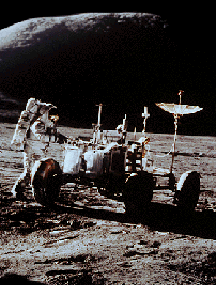Image of an astronaut and the Lunar Rover.
Click on image for full size
Aris Multimedia Entertainment, Inc 1994.
Human Spaceflight
It was not long after the first space satellites were launched that we
succeeded in getting a human being into space. These first astronauts
and cosmonauts (the Russian word for astronaut) were test pilots who were
very familiar with flying in fast and dangerous planes! The first human
being to travel into space was Yuri Gagarin (USSR, 1961), followed a month
later by the US astronaut Alan Shepard.
Once we found out that humans could travel in space, a "space race"
quickly developed between the United States and the Soviet Union. The United States
main interest was to land on the moon. The Soviet Union was more interested in
setting endurance records and doing scientific research.
Russia, the United States, and 14 other countries are now working together on the International Space Station project.
For a brief history of the United States and Soviet Union human spaceflight programs, click
here.
Discover more about human spaceflight through the links below!
You might also be interested in:

The International Space Station (ISS) is a very large space station in orbit around Earth. The ISS is currently inhabited and in use, but it is also under construction; new modules are gradually being
...more
Despite adverse weather conditions, the orbiter Columbia was launched July 1, 1997 at 1:02 CDT. This begins a 16-day mission. The STS-94 is the reflight of the STS-83 mission. The original mission was
...more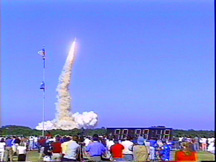
The Space Shuttle Discovery lifted off from Kennedy Space Center at 2:19 p.m. EST, October 29th. The sky was clear and the weather was great as Discovery took 8 1/2 minutes to reach orbit for the Unitied
...more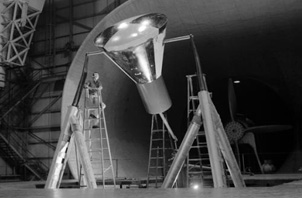
This is Administrator Goldin's address about NASA's 40th anniversary: "Forty years ago, in 1958, the National Aeronautics and Space Administration was created with the boldest and most noble of missions:
...more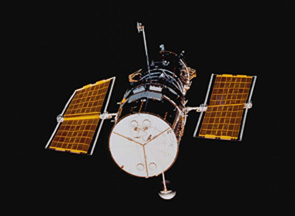
The Hubble Space Telescope (HST) was one of the most important exploration tools of the past two decades, and will continue to serve as a great resource well into the new millennium. The HST is credited
...more
Driven by a recent surge in space research, the Apollo program hoped to add to the accomplishments of the Lunar Orbiter and Surveyor missions of the late 1960's. Apollo 11 was the first mission to succeed
...more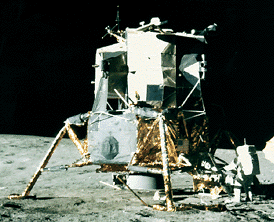
Apollo 12 survived a lightning strike during its launch on Nov. 14, 1969, and arrived at the Moon three days later. Astronauts Charles Conrad and Alan Bean descended to the surface, while Richard Gordon
...more


